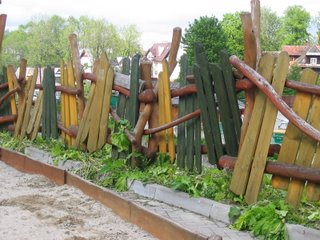This is amazing.
I began reading Anielka by Bolesław Prus in March. It was entirely an exercise in Polish, intended to improve my vocabulary and grammatical intuition. When I read the first chapter, each time I encountered a word I was not sure of, I underlined it. I planned to look up all the underlined words later, and then reread the chapter. I underlined 109 words. It takes a long time to look up 109 words. I begin the exercise once, and after spending nearly two hours, I hadn’t finished all the words. I abandoned the project at that point.
By April, I decided to continue without worrying about the words I didn’t understand. As long as I understood the general shape of the story, I was willing to miss a few nuances here and there, and occasionally even abandon an entire sentence to oblivion. I think I mananged to read only one chapter per month in this way.
In May, I began to force myself to read two pages per day. Sometimes I missed a day, but I forged ahead with this plan, and read a little more than I had done in previous months. I also began to have a stronger sense of the story. I was still missing words, but was able to glean most of the meaning from context.
In June, something extraordinary happened. Not only did my “reading power” increase so that I could easily read an entire chapter at one sitting, instead of just two pages, but I ceased to read Anielka as an exercise to improve my Polish and began to read it as literature. I observed a theme repeated throughout the book, and I began to see the way in which the author was using the theme to make a statement about life and God.
In many chapters, the sparrows are mentioned. They reappear again and again, until the reader is forced into remembering that sparrows are supposed to be a reminder of God’s providential care for his children. “Are not two sparrows sold for a farthing? And one of them shall not fall on the ground without your Father. But the very hairs of your head are all numbered. Fear ye not, therefore; ye are of more value than many sparrows." (Matthew 10:29-31) Prus doesn't come right out and say that, of course--he lets the sparrows say it for him, and there are fine details about what is going on with the sparrows that make the point clear. Anielka, along with her brother and mother, are abandoned by her father, and left without money, servants, and, although they don’t know it, their home has been sold. Chapter eleven is titled “W jaki sposób Bog czuwa nad sierotami” or “How God looks after orphans.”
Do you really want to know? Clearly, Prus did not have a high opinion of God. During the night, their house burns to the ground, and they are saved only because one of the villagers comes to their rescue. No one can determine how the fire started, but earlier in the chapter, the author tells about Anielka praying and asking God to bring her father back, and as she is looking out the window, she sees one or two stars fall. She imagines that they are angels or spirits being sent from God to help them. And then the house burns down, and even though no one knows how it happened, we are meant to “suspect” that God is behind it, or at the very least, that he does not care.
Frankly, I think Anielka's father is reprehensible, and running out on his family is the act of a coward. I have been told that this is a "sad" book, and I've also been warned that Anielka dies, so I wasn't expecting an L.M. Montgomery-style happy ending. However. I did not know that the book would try to cast God in the role of the villian, when Anielka's "Lord of the Manor" father is clearly responsible for nine-tenths of what befalls the children and their mother. After the house gets burned down, he behaves even more like a knave, but it is not my primary purpose to explain the book, which few of my readers can read anyway (I don't think it has been translated), and probably wouldn't want to if they could.
Regardless of the content of the book, what is significant to me is that I am reading this book as I would read any book, although much more slowly. I've read eight chapters this month--that's half the book!--and will finish it easily sometime during early July. I still don't understand every word, but that's okay. Just as I sometimes run across an unfamiliar word in English when I read, I can either glean the general meaning from the context, or look it up if necessary.
I am reading in Polish! That is what is so amazing. And I went back to chapter one and looked at the 109 underlined words, and I now know the meaning of 51 of them without consulting a dictionary. I guess that means my Polish has improved by 50%? I think that's wonderful, but I am not content, as there is clearly plenty of room for improvement. Thus, I shall keep reading...in Polish.






